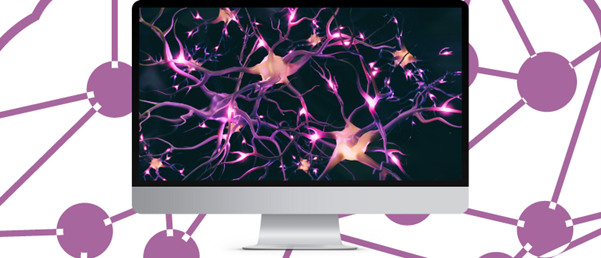
BioTechniques News
Aisha Al-Janabi

I know you’ve heard of artificial intelligence (AI), but what about organoid intelligence (OI)? Researchers from multiple disciplines are working together to create biocomputers powered by 3D cultures of human brain cells.
An international research collaboration led by scientists at Johns Hopkins University (MD, USA) is in the process of building the first OI biocomputer. Although designed to reflect brain circuitry, AI still pales in comparison to the human brain. That’s why researchers turned to brain organoid technology to create a new biological hardware.
Organoids are 3D cell cultures grown in the lab; currently, they’re being used for modeling disease and therapeutic discovery, among other research initiatives. Although brain organoids are incomplete brains, they have a greater cell density than 2D cultures, allowing for an increased number of complex neuronal connections. Compared to AI, OI may offer a greater ability to learn while also using less energy.
In order for OI biocomputers to exist and function as intended, brain organoid cultures need to be scaled up from their current 500,000 neurons to 10 million. Additionally, the way in which researchers can input information and receive the organoid’s ‘thoughts’ need further developments.
“We developed a brain–computer interface device that is a kind of an EEG cap for organoids, which we presented in an article published last August. It is a flexible shell that is densely covered with tiny electrodes that can both pick up signals from the organoid, and transmit signals to it,” reported senior author Thomas Hartung (John Hopkins University). They plan to further develop tools to stimulate the brain organoid and record its neural output.
 The neurons that came to play… in vitro
The neurons that came to play… in vitro
A new study has demonstrated that neurons cultivated in a dish, called ‘DishBrain’, exhibit awareness in a stimulated game environment.
But what would OI mean for medicine and neurological conditions?
Due to the previous discovery that mature cells can become pluripotent by John Gurdon (Oxford University, UK) and Shinya Yamanaka (Kyoto University, Japan), who were awarded the 2012 Nobel Prize in Physiology or Medicine for this finding, brain organoids can now be personalized from patients’ skin samples. These personalized brain organoids can then be examined to better understand the neurological condition of the patient from whom they were harvested.
“With OI, we could study the cognitive aspects of neurological conditions as well,” Hartung said. “For example, we could compare memory formation in organoids derived from healthy people and from Alzheimer’s patients, and try to repair relative deficits. We could also use OI to test whether certain substances, such as pesticides, cause memory or learning problems.”
OI does raise ethical concerns, as advancing brain organoids’ complexity and intelligence could also result in organoid sentience; because of these concerns, the team is continually assessing the ethical implications of their work and have partnered with ethicists.
Although OI is in the early stages of its development, one of the co-authors of this paper recently published a paper detailing how a 2D brain cell culture learned to play a video game. “Their team is already testing this with brain organoids,” Hartung commented. “And I would say that replicating this experiment with organoids already fulfills the basic definition of OI. From here on, it’s just a matter of building the community, the tools, and the technologies to realize OI’s full potential.”
The post Introducing organoid intelligence: human brain cells that power biocomputers appeared first on BioTechniques.
Full BioTechniques Article here
Powered by WPeMatico
